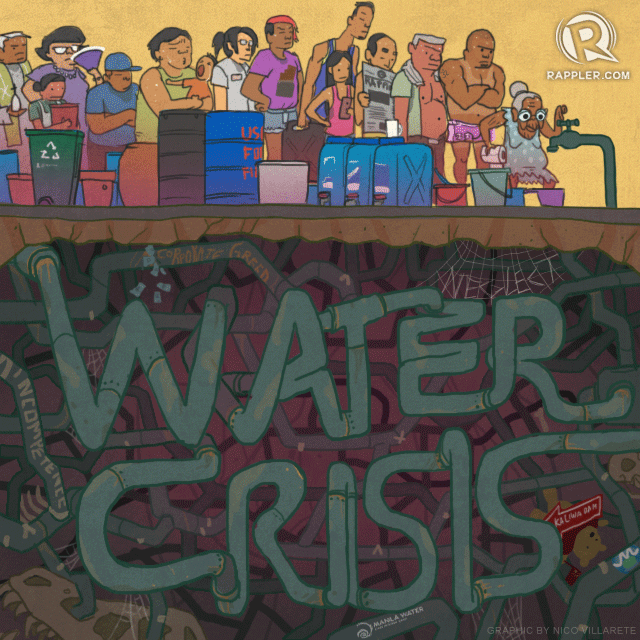As a country cursed with an average of 20 tropical cyclones each year, Filipinos have a saint we offer eggs to for clear skies – Santa Clara. The problem is, we seem to lack a patron saint for making rain pour.
In the absence of divine intervention, one public official even made the tasteless joke of #showertogether using a tabo (dipper). That’s what we have been reduced to nowadays – resorting to insensitive, futile jokes and search for saints – because it seems that solutions, especially the long term ones, aren’t part of our DNA as a people supposedly governed by rules, policies, and contigencies.
Manila Water, the apparent culprit in this water crisis, had raised the alarm since 2016, and again in August last year, predicting that the crisis would happen in 2021. The crisis is two years early.
Image may be NSFW.
Clik here to view. .
.
“Bahala na.” That’s the Filipino phrase for “leave it up to Bathala (God).”
When asked when the crisis would end, a Manila Water official gave this reply: “Actually, the answer is easy: until it rains.” That’s a bahala na answer, if ever we heard one. The question is: what's the long-term solution?
Manila Water explains that the water crisis is due to low levels at Bulacan’s Angat Dam, which supplies 96% of Metro Manila’s water supply that has to meet a staggering demand of 15 million water users during the day. (That’s a population density higher than Mumbai, Paris, and even Tokyo.) The deficit in supply is supposed to be filled by water from La Mesa Dam in Quezon City, which has hit a critical low level.
That’s the academic answer to our current woes.
The real answer is that the crisis was the product of short-sightedness that underlines many of our responses to “hand of God” events such as El Niño, La Niña, storm surges, typhoons, landslides, and global warming.
In this case, Manila Water seems to be wallowing in it. The Metropolitan Waterworks and Sewerage System (MWSS) and state weather bureau PAGASA say they do not buy the concessionaire's explanation that El Niño and La Mesa Dam's low water level triggered the service interruptions. Why is Maynilad, the northern counterpart of Manila Water in the metropolis, not as severely affected by the supply crunch? Apparently, Maynilad was able to expand its water infrastructure in recent years to include smaller reservoirs, deep wells, and the nearby Laguna Lake.
The problem is only exacerbated when the Palace itself does not understand the core of the problem. The Palace spokesman probably thought he was being smart when he said the shortage may be "artifiiclal.”
When his boss commanded – in true Moses fashion – to “open Angat Dam" and supply water "good for 150 days,” an MWSS official had to bluntly state that President Rodrigo Duterte was ill-advised. Perhaps candidates running under the administration should revise their joke skits to rain dances now?
While public utility Manila Water is part of the problem, the government-run MWSS, which admitted that it is ultimately to blame because "it is the responsibility of government to source all this water," is the orchestra conductor that wields the baton.
We need strategic thinking, not magnanimous confessions of guilt. We need a solution that does not hurt the environment or hand over more power to a foreign loaner. We need water providers and a water regulator that put efficiency and public service first above all other parochial goals and vested interests.
There's one place where the buck stops – Malacañang, past and present. Rappler’s resident economic analyst put it well: The Duterte administration will do well to divert its energy and time from manufactured crises like the country’s drug problem to real crises like Metro Manila’s water shortage.
The learned helplessness has morphed into a full-blown comedy of errors, as poor Filipinos, hauling and queuing their water pails, become yet again the real casualties of pure inefficiency. – Rappler.com
Image may be NSFW.Clik here to view.
